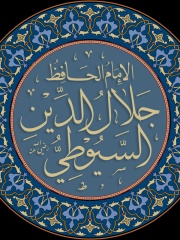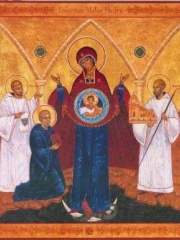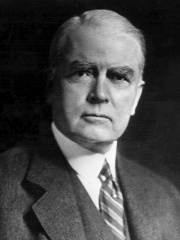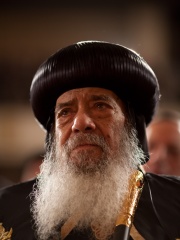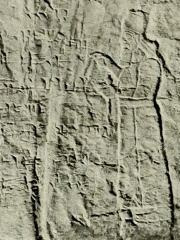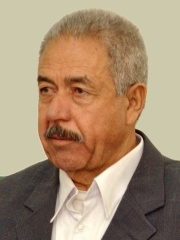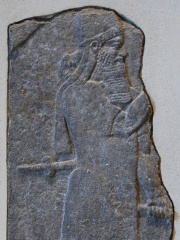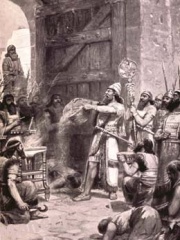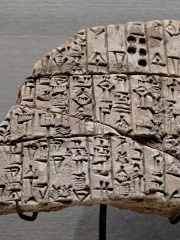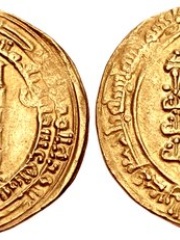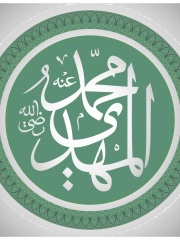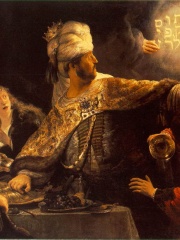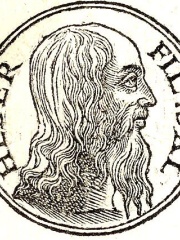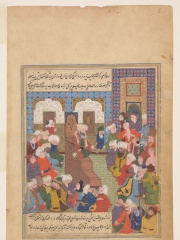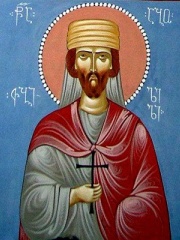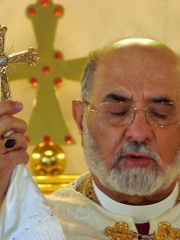RELIGIOUS FIGURE
Nahor, son of Serug
1912 BC - 1764 BC
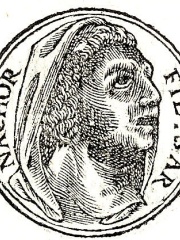
 Nahor, son of Serug
Nahor, son of Serug
Nahor, son of Serug was a religious figure born in 1912 BC in , which is now part of modern day Sumer, Iraq. Nahor, son of Serug died at 148 years old in NaN.
His biography is available in 24 different languages on Wikipedia (up from 22 in 2024). Nahor, son of Serug is the 737th most popular religious figure (up from 742nd in 2024), the 71st most popular biography from Iraq (up from 80th in 2019) and the 13th most popular Iraqi Religious Figure.
Memorability Metrics
Page views of Nahor, son of Serug by language
Among RELIGIOUS FIGURES
Among religious figures, Nahor, son of Serug ranks 737 out of 3,187. Before him are Chaitanya Mahaprabhu, Angelo Scola, Obadiah, Al-Suyuti, Robert of Molesme, and John Mott. After him are Benkei, Mordecai, Saint Remigius, Olaus Magnus, Matteo Zuppi, and Pope Shenouda III of Alexandria.
Most Popular Religious Figures in Wikipedia
Go to all RankingsChaitanya Mahaprabhu
1486 - 1534
HPI: 70.26
Rank: 731
Angelo Scola
1941 - Present
HPI: 70.24
Rank: 732
Obadiah
587 BC - 500 BC
HPI: 70.24
Rank: 733
Al-Suyuti
1445 - 1505
HPI: 70.22
Rank: 734
Robert of Molesme
1024 - 1111
HPI: 70.19
Rank: 735
John Mott
1865 - 1955
HPI: 70.17
Rank: 736
Nahor, son of Serug
1912 BC - 1764 BC
HPI: 70.15
Rank: 737
Benkei
1155 - 1189
HPI: 70.14
Rank: 738
Mordecai
HPI: 70.14
Rank: 739
Saint Remigius
437 - 533
HPI: 70.12
Rank: 740
Olaus Magnus
1490 - 1557
HPI: 70.10
Rank: 741
Matteo Zuppi
1955 - Present
HPI: 70.05
Rank: 742
Pope Shenouda III of Alexandria
1923 - 2012
HPI: 70.03
Rank: 743
Contemporaries
Among people born in 1912 BC, Nahor, son of Serug ranks 1. Among people deceased in 1764 BC, Nahor, son of Serug ranks 1.
Others Born in 1912 BC
Go to all RankingsOthers Deceased in 1764 BC
Go to all RankingsIn Iraq
Among people born in Iraq, Nahor, son of Serug ranks 71 out of 384. Before him are Tiglath-Pileser I (-1200), Ali Hassan al-Majid (1941), Louis Raphaël I Sako (1948), Tariq Aziz (1936), Ibn Hisham (701), and Abu Yusuf (731). After him are Tiglath-Pileser III (-755), Shalmaneser I (-1400), Berossus (-400), Qutayba ibn Muslim (668), Urukagina (-2500), and Al-Muqtadir (895).
Others born in Iraq
Go to all RankingsTiglath-Pileser I
POLITICIAN
1200 BC - 1076 BC
HPI: 70.75
Rank: 65
Ali Hassan al-Majid
PUBLIC WORKER
1941 - 2010
HPI: 70.70
Rank: 66
Louis Raphaël I Sako
RELIGIOUS FIGURE
1948 - Present
HPI: 70.61
Rank: 67
Tariq Aziz
POLITICIAN
1936 - 2015
HPI: 70.60
Rank: 68
Ibn Hisham
RELIGIOUS FIGURE
701 - 833
HPI: 70.58
Rank: 69
Abu Yusuf
PHILOSOPHER
731 - 798
HPI: 70.34
Rank: 70
Nahor, son of Serug
RELIGIOUS FIGURE
1912 BC - 1764 BC
HPI: 70.15
Rank: 71
Tiglath-Pileser III
POLITICIAN
755 BC - 727 BC
HPI: 70.13
Rank: 72
Shalmaneser I
POLITICIAN
1400 BC - 1300 BC
HPI: 70.13
Rank: 73
Berossus
WRITER
400 BC - 300 BC
HPI: 70.12
Rank: 74
Qutayba ibn Muslim
MILITARY PERSONNEL
668 - 715
HPI: 70.05
Rank: 75
Urukagina
POLITICIAN
2500 BC - 2371 BC
HPI: 69.89
Rank: 76
Al-Muqtadir
POLITICIAN
895 - 932
HPI: 69.78
Rank: 77
Among RELIGIOUS FIGURES In Iraq
Among religious figures born in Iraq, Nahor, son of Serug ranks 13. Before him are Muhammad al-Mahdi (869), Belshazzar (-600), Eber (-2038), Junayd of Baghdad (830), Louis Raphaël I Sako (1948), and Ibn Hisham (701). After him are Hillel the Elder (-110), Ibn Qutaybah (828), Mohammad Hussein Fadlallah (1935), Ibn Sa'd (784), Abo of Tiflis (756), and Dinkha IV (1935).
Muhammad al-Mahdi
869 - 941
HPI: 76.87
Rank: 7
Belshazzar
600 BC - 600 BC
HPI: 75.54
Rank: 8
Eber
2038 BC - 1574 BC
HPI: 74.57
Rank: 9
Junayd of Baghdad
830 - 910
HPI: 71.53
Rank: 10
Louis Raphaël I Sako
1948 - Present
HPI: 70.61
Rank: 11
Ibn Hisham
701 - 833
HPI: 70.58
Rank: 12
Nahor, son of Serug
1912 BC - 1764 BC
HPI: 70.15
Rank: 13
Hillel the Elder
110 BC - 10
HPI: 69.20
Rank: 14
Ibn Qutaybah
828 - 889
HPI: 68.10
Rank: 15
Mohammad Hussein Fadlallah
1935 - 2010
HPI: 65.96
Rank: 16
Ibn Sa'd
784 - 845
HPI: 65.86
Rank: 17
Abo of Tiflis
756 - 786
HPI: 65.48
Rank: 18
Dinkha IV
1935 - 2015
HPI: 64.98
Rank: 19



